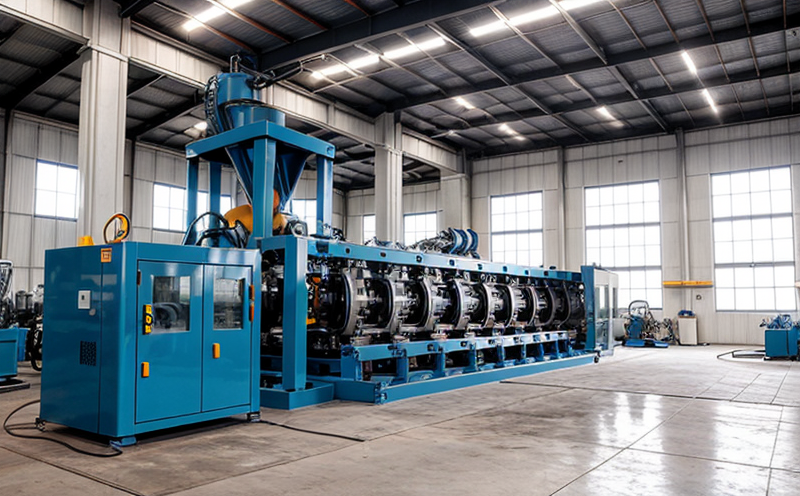ASTM E384 Vickers Hardness Performance Testing of Equipment
The ASTM E384 standard provides a method to determine the hardness of materials using the Vickers indentation. This service is particularly important for Industrial Manufacturing & Processing Testing, where the performance and durability of machinery and equipment are critical factors in ensuring efficiency, safety, and compliance with international standards.
Machinery and equipment within this sector often undergo extensive wear and tear during operation, which can significantly impact their performance. By using ASTM E384 Vickers Hardness Testing, manufacturers and quality managers can assess the hardness of various materials used in these machines to ensure that they meet specific requirements for strength, durability, and resistance to abrasion.
The Vickers hardness test is versatile and applicable across a wide range of industries including automotive, aerospace, electronics, and more. It measures the hardness by indenting a sample with a diamond indenter under a specified load, then measuring the resulting indentation diameter. This allows for accurate and repeatable results, which are essential in quality control processes.
For machinery components such as gears, bearings, and shafts, Vickers hardness testing can provide insights into their ability to withstand stress and fatigue. In many cases, higher Vickers hardness values indicate greater resistance to wear and tear, making it an indispensable tool for R&D engineers and compliance officers looking to optimize the performance of their equipment.
In addition to its technical applications, this service also plays a crucial role in ensuring compliance with industry standards such as ISO 6507-2. By adhering to these standards, manufacturers can ensure that their products meet the required specifications for hardness and durability, thereby enhancing their reputation and market competitiveness.
Scope and Methodology
The ASTM E384 Vickers Hardness Testing service follows a precise methodology outlined in the standard to ensure accurate and reliable results. The process begins with selecting the appropriate indenter for the material being tested, typically a diamond pyramid with an angle of 136°.
| Step | Action |
|---|---|
| 1 | Select the correct indenter and test force based on the expected hardness range of the sample. |
| 2 | Place the sample under the test force using a Vickers indentation machine. |
| 3 | Measure the length of the indentation diagonals with high precision. |
| 4 | Calculate the hardness value using the formula provided in ASTM E384. |
| 5 | Analyze the results to assess material properties and compliance with specified standards. |
The testing machine used for this service is equipped with a high-resolution microscope and advanced software to ensure accurate measurement of indentation diameters. This precision is crucial, as even small errors in measurement can lead to significant discrepancies in hardness values.
| Equipment | Description |
|---|---|
| Vickers Indentation Machine | A calibrated machine that applies the specified test force and measures indentation dimensions accurately. |
| Microscope | An instrument used to measure the indentation diagonals with high precision. |
| Software | Advanced software for data analysis, ensuring accurate calculation of hardness values. |
Environmental and Sustainability Contributions
- Eco-friendly materials: By using ASTM E384 Vickers Hardness Testing to ensure that machinery components meet the required durability standards, manufacturers can reduce waste by minimizing component failure.
- Sustainable design: This testing helps in designing equipment that is more efficient and robust, thus reducing operational costs over time.
- Energy savings: Equipment with higher hardness values tends to last longer, which indirectly contributes to reduced energy consumption due to less frequent replacements.
The ASTM E384 Vickers Hardness Testing service supports sustainable practices by ensuring that only the most robust and durable materials are used in manufacturing processes. This not only helps in reducing waste but also enhances the overall efficiency of machinery, leading to long-term cost savings for businesses.
Competitive Advantage and Market Impact
The ASTM E384 Vickers Hardness Performance Testing service offers significant competitive advantages by providing precise and reliable data that can be used to optimize the design and performance of machinery and equipment. This ensures that products meet or exceed international standards, thereby enhancing their reputation in the market.
For quality managers and compliance officers, this service provides a critical tool for ensuring adherence to industry specifications. By using ASTM E384 Vickers Hardness Testing, they can identify any potential issues early on in the production process, allowing for timely adjustments that improve product performance and reliability.
R&D engineers benefit from this testing as it enables them to innovate with confidence, knowing that their designs are backed by rigorous testing standards. This not only enhances their research efforts but also supports the development of cutting-edge technologies that can give companies a competitive edge in the market.





